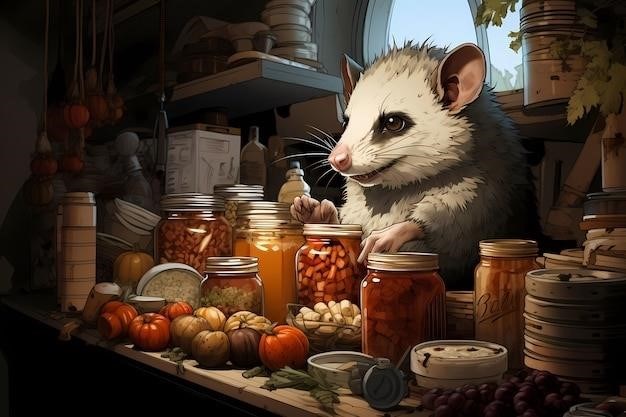
Of Mice and Men Chapter 3⁚ A Detailed Analysis
Chapter 3 of John Steinbeck’s “Of Mice and Men” delves deeper into the complex relationships and tensions brewing on the ranch․ The chapter opens with a conversation between George and Slim, establishing Slim’s role as a wise and respected leader․ We witness the tragic death of Candy’s dog, which foreshadows the potential for loss and hardship․ The dream of owning their own farm is further developed, highlighting the importance of friendship and shared aspirations․ The chapter culminates in a violent confrontation between Curley and Lennie, exposing Curley’s aggression and Lennie’s vulnerability․
Introduction
Chapter 3 of John Steinbeck’s “Of Mice and Men” marks a significant turning point in the narrative, deepening the themes of friendship, loneliness, and the harsh realities of life․ It is a chapter brimming with tension and foreshadowing, setting the stage for the tragic events that will unfold later in the novel․ The chapter opens with a scene of camaraderie between George and Slim, highlighting the importance of companionship in a world where loneliness often prevails․ This sense of camaraderie is contrasted with the harsh realities of the ranch, as we witness the death of Candy’s dog, a poignant symbol of the vulnerability and fragility of life․ This chapter also introduces the growing conflict between Curley and Lennie, setting the stage for a dramatic confrontation that will have profound consequences for both characters․
Major Events in Chapter 3
Chapter 3 of “Of Mice and Men” is packed with pivotal events that shape the narrative and foreshadow future conflicts․ The chapter opens with the discussion of Candy’s aging dog, a conversation that quickly turns into a debate about the dog’s fate․ Carlson, a ranch hand, argues for euthanasia, while Candy, deeply attached to his dog, hesitates․ This scene underscores the harsh realities of life on the ranch, where practicality often overrides sentimentality․ The chapter also witnesses the growing tension between Curley and Lennie․ Curley, a small but aggressive man, is constantly suspicious of Lennie and harbors a deep-seated jealousy․ The fight between them is a culmination of this tension, highlighting the power dynamics and the potential for violence that exist on the ranch․
The Death of Candy’s Dog
The death of Candy’s dog in Chapter 3 is a poignant and symbolic event․ It serves as a stark reminder of the harsh realities of life on the ranch and the inevitable cycle of life and death․ Candy’s dog, an old and ailing creature, is a source of comfort and companionship for him․ However, the other ranch hands, led by Carlson, see the dog as a burden and advocate for its euthanasia․ Carlson’s argument is rooted in practicality, emphasizing the dog’s suffering and the inconvenience it causes․ Despite Candy’s initial resistance, he eventually succumbs to the pressure and allows Carlson to shoot the dog․ The scene is emotionally charged, highlighting Candy’s deep attachment to his dog and the difficult choices he faces in a world where practicality often trumps sentimentality․ The dog’s death foreshadows the potential for loss and hardship that awaits the characters, particularly Lennie, who is also seen as a burden by some․
The Discussion of the Dream
The dream of owning their own farm, a recurring theme throughout the novel, takes center stage in Chapter 3․ George and Lennie, along with Candy, engage in a spirited discussion about their future aspirations․ Their shared dream provides them with a sense of purpose and hope amidst the harsh realities of their lives․ The discussion reveals the depth of their friendship and their unwavering commitment to achieving their goal․ Candy, a lonely and isolated man, eagerly embraces the opportunity to join their dream, offering his savings and his desire for a life beyond the ranch․ The dream serves as a powerful symbol of their yearning for a better life, a life free from the constraints and injustices they face in the present․ However, the chapter also subtly foreshadows the potential obstacles that lie ahead, reminding us that dreams are not always easily realized in a world filled with hardship and uncertainty․
The Fight Between Curley and Lennie
The tension between Curley and Lennie reaches a boiling point in Chapter 3, culminating in a violent confrontation․ Curley, a small, quick-tempered man, is consumed by jealousy and insecurity, particularly regarding his wife․ His aggressive nature and constant need to assert dominance lead to a confrontation with Lennie, who is innocent and oblivious to Curley’s intentions․ The fight highlights the stark contrast between their personalities and their understanding of the world․ Lennie, despite his immense physical strength, is gentle and easily manipulated, while Curley is a bully who thrives on violence․ The fight ends with Lennie crushing Curley’s hand, a powerful symbol of Lennie’s unintended strength and the potential consequences of his actions․ The scene leaves a lasting impression, foreshadowing the dangers that Lennie’s physical power poses and the potential for tragic outcomes․
Character Development in Chapter 3
Chapter 3 of “Of Mice and Men” provides significant insights into the personalities and motivations of the characters․ Slim, a skilled and respected ranch hand, emerges as a leader who commands respect and offers guidance․ His understanding and acceptance of Lennie’s disability set him apart from the other men and contribute to his role as a mediator․ Lennie’s vulnerability and strength are further explored, as he is easily manipulated but possesses immense physical power․ His innocence and desire for companionship contrast sharply with the harsh realities of the ranch life․ Curley, the ranch owner’s son, is presented as a jealous and aggressive individual, driven by insecurity and a need for control․ His constant pursuit of his wife and his violent outburst towards Lennie highlight his unstable nature and his potential for causing harm․ Through these character developments, Steinbeck sets the stage for the unfolding conflicts and tragic events that will define the story․
Slim’s Role as a Leader
In Chapter 3 of “Of Mice and Men,” Slim emerges as a pivotal figure, embodying wisdom, compassion, and a sense of justice that sets him apart from the other ranch hands․ His quiet authority and understanding demeanor earn him the respect of the men, particularly George, who confides in him about Lennie’s mental limitations․ Slim’s ability to see through the facade of the ranch’s harshness and recognize the genuine bond between George and Lennie highlights his perceptive nature․ He acts as a mediator in the escalating conflict between Curley and Lennie, offering guidance and understanding while recognizing the inherent danger of Curley’s volatile personality․ Slim’s presence on the ranch represents a glimmer of hope amidst the bleak realities of the workers’ lives, offering a sense of stability and moral compass in a world marked by hardship and cruelty․
Lennie’s Vulnerability and Strength
Chapter 3 of “Of Mice and Men” delves deeper into Lennie’s complex character, revealing both his vulnerability and unexpected strength․ While his mental disability makes him appear childlike and dependent on George, Lennie possesses a surprising physical power that becomes evident in the confrontation with Curley․ His immense strength, often perceived as a threat, is revealed as a means of self-defense, a reaction to the fear and pain he experiences when threatened․ Lennie’s vulnerability is further emphasized by his deep affection for animals and his longing for connection, which is ultimately manifested in his desire to tend rabbits and his bond with George․ This duality between vulnerability and strength creates a poignant portrayal of a character who is both fragile and capable of causing significant harm, highlighting the complex nature of human beings and the unpredictable consequences of their actions․
Curley’s Jealousy and Aggression
In Chapter 3 of “Of Mice and Men,” Curley’s character is further defined by his relentless jealousy and aggression․ His constant questioning about Slim’s interactions with his wife reveals a deep insecurity and possessiveness․ Curley’s need to assert his dominance and control is evident in his aggressive behavior towards Lennie, whom he views as a potential threat․ His unprovoked attack on Lennie highlights his volatile nature and his tendency to lash out at those he perceives as weaker․ Curley’s actions are fueled by a sense of entitlement and a need to maintain his power on the ranch, further emphasizing the theme of societal inequality and the inherent struggles faced by those perceived as different or vulnerable․
Themes Explored in Chapter 3
Chapter 3 of “Of Mice and Men” delves deeper into the complex themes that underpin the story․ The power of friendship is further explored through the bond between George and Lennie, highlighting the strength and support they provide each other․ The chapter also emphasizes the harsh realities of life, particularly through the death of Candy’s dog, which serves as a poignant reminder of the fragility and impermanence of life․ The importance of dreams is reinforced through the continued discussion of George and Lennie’s shared aspiration to own their own farm, showcasing the power of hope and the desire for a better future․ These themes intertwine to create a compelling exploration of human relationships, societal challenges, and the search for meaning and purpose in a world filled with both beauty and brutality․

The Power of Friendship
Chapter 3 of “Of Mice and Men” underscores the profound strength of the bond between George and Lennie․ Slim, the wise and respected ranch hand, recognizes the unique connection they share, stating, “I seen guys like you before․ They come, an’ they quit an’ they come back․ But you guys is different․ You got a future․” This observation highlights the unwavering loyalty and support George provides Lennie, despite the challenges they face․ The scene where George confronts Lennie about the puppy he’s hidden, while stern, is rooted in a deep care for Lennie’s well-being․ Their shared dream of owning a farm, a dream that unites them and gives them purpose, reinforces the idea that their friendship transcends the harsh realities of their lives․ The chapter emphasizes the strength of their bond and its significance as a source of hope and resilience․
The Harsh Realities of Life
Chapter 3 of “Of Mice and Men” starkly portrays the harsh realities of life on the ranch, a world where survival often overshadows dreams․ The brutal killing of Candy’s old dog by Carlson, despite Candy’s pleas, serves as a chilling reminder of the indifference and pragmatism that govern the lives of the ranch hands․ Carlson’s matter-of-fact approach, stating “He ain’t no good to himself nor nobody else,” reflects the harsh practicality that governs their existence․ The scene underscores the harsh realities of life for those who are perceived as weak or unproductive, a grim foreshadowing of the potential fate awaiting Lennie․ The chapter further highlights the constant threat of violence and the precariousness of their lives, as seen in the fight between Curley and Lennie․ The ranch becomes a microcosm of a world where strength and brutality often prevail over compassion and empathy․
The Importance of Dreams

Chapter 3 of “Of Mice and Men” further emphasizes the significance of dreams in providing hope and purpose amidst the harsh realities of life․ The conversation between George, Lennie, and Candy about purchasing a farm together underscores the power of shared aspirations․ Their dream of owning a place of their own, a haven where they can escape the drudgery of ranch life, serves as a beacon of hope and a source of motivation․ The dream represents a vision of independence, freedom, and a life lived on their own terms․ It is a testament to the enduring human need for something to strive for, a belief that a better future is attainable․ While the dream is fragile and vulnerable to the harsh realities of their world, it provides a sense of purpose and a reason to persevere, even in the face of adversity․


